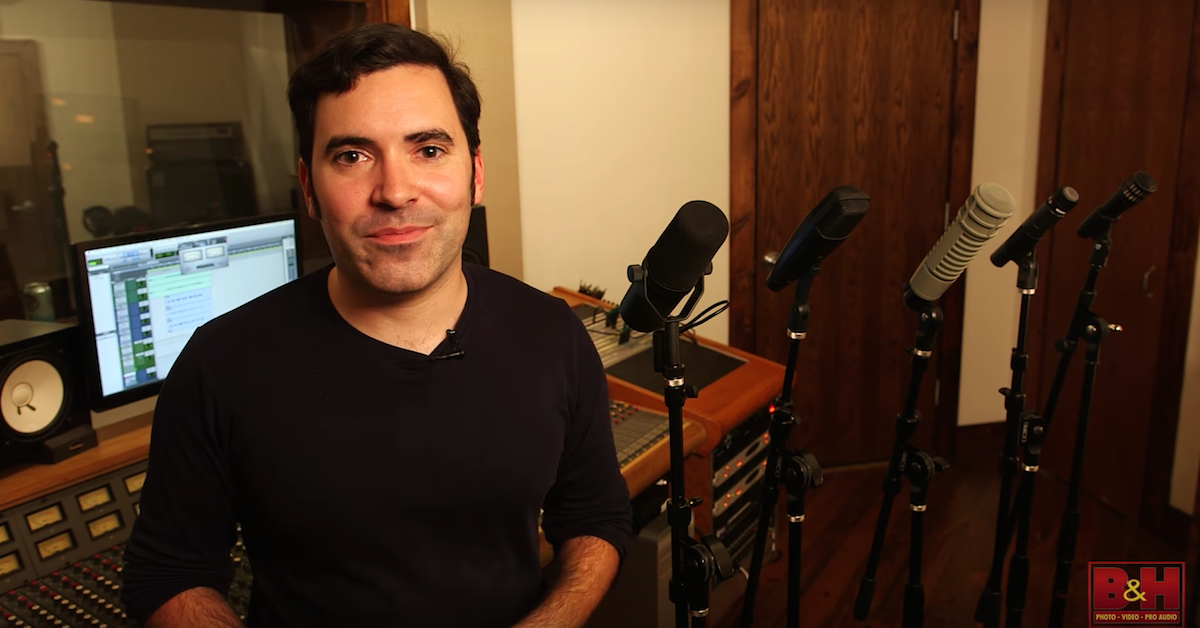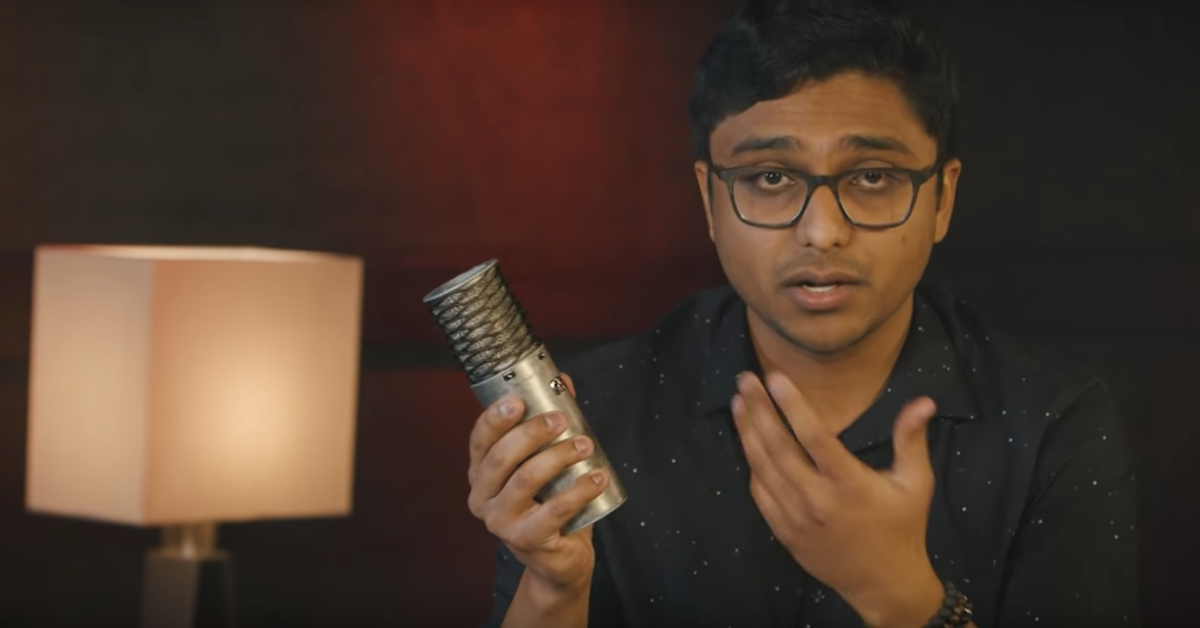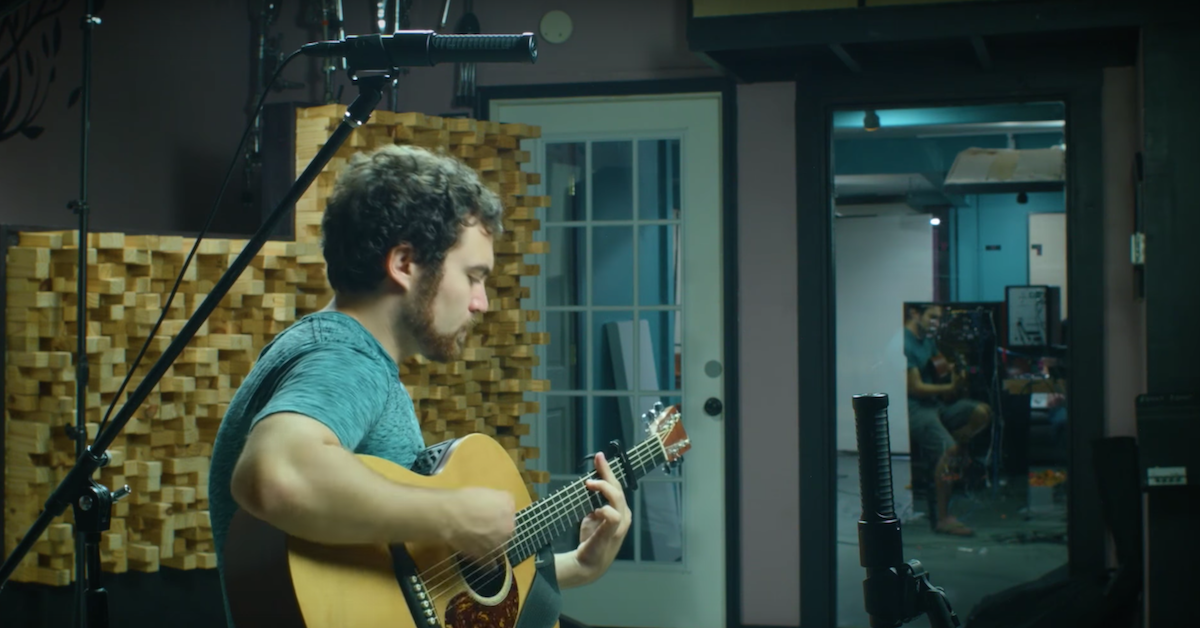Shure SM7B: The Ultimate Microphone for Home Studios?
Article Content
The Shure SM7B is a workhorse microphone. Despite costing thousands less than other professional-grade studio microphones, it has made its way onto some of the most popular musical recordings of all time and is widely utilized for broadcast and voiceover applications too. I purchased mine four years ago, and it has become one of my most used (and beloved) pieces of studio equipment.
Let’s take a look at the history of the Shure SM7B, analyze its characteristics and I’ll explain why I believe it to offer one of the best values for a microphone.
SM7B Evolution
The SM7B is a direct descendant of the Shure SM5 dynamic microphone. Released in 1966, the SM5 quickly became a popular tool for producing radio and film. Shortly thereafter, Shure released the more compact Shure SM57. The ’57 is still a recording studio staple, arguably holding the throne as the best microphone for recording snare drum and electric guitar amplifier. John Born, product manager at Shure explains what happened next:
“The development of the SM7 went something like this: a group of Shure acoustical engineers were given the SM57 cartridge element (Unidyne III) and asked, without restrictions on size or cost, to make it better. And they went nuts.”
Born has gone so far as calling the SM7 a “SM57 on steroids.” Released in 1973, the SM7 featured a flatter and wider frequency response than the SM57 and SM58 (which is a staple for live vocals). The SM7 also featured frequency shaping switches, making it more versatile than those microphones. Two updates to the original SM7 followed: the SM7A was released in 1999 and the 7B was introduced in 2001.
The SM7 became engineer Bruce Swedien’s microphone of choice when recording Michael Jackson’s vocals, including on the Quincy Jones-produced album Thriller. Released in 1982, Thriller went on to sell over 110 million copies. The SM7 was also used to record the haunting voiceover by Vincent Prince on the “Thriller” single.
Other artists that have employed the dynamic workhorse for vocal recording duties include Green Day, Bob Dylan, Sheryl Crow, Metallica and many more. The SM7B is no one-trick pony though. It can be used to record everything from percussive, high-SPL sources such as snare drum and toms, to electrified signals such as guitar amplifier and bass cabinet, to more nuanced brass instruments like saxophone and trumpet.
Rik Simpson, who has engineered Coldplay, states that singer Chris Martin sometimes prefers recording in the control room with music playing from the monitors rather than headphones. In this particular situation, the Shure SM7 is the preferred microphone. This is most likely due to its ability to prevent the unwanted bleed from the monitors.
Check out this beautiful performance by Sam Smith, who is singing into an SM7B live from Hackney Round Chapel.
The SM7B remains a trusted choice for broadcast, podcasting and streaming. Marc Maron, Dax Shepard, Anna Farris and Joe Rogan are just a small sample of the podcasters who use an SM7B when recording their programs.
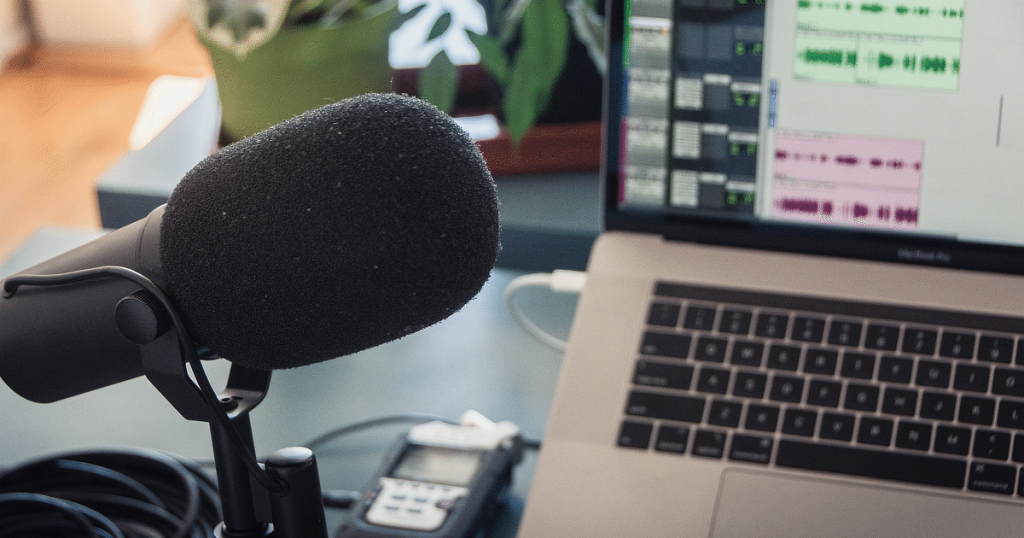
SM7B Specs
The SM7B is a dynamic microphone, which means it’s a bit darker in tone than a large diaphragm condenser. Because of this, I find myself using a bit of additive equalization either on the way in or when mixing. It has a cardioid polar pattern, which does wonders at picking up the sound source(s) directly in front of the microphone and rejecting sound from the back and sides. Its frequency response is 50 Hz to 20 kHz. As you’ll see in the chart below it’s not entirely flat, but (depending on recording techniques) the raw signal coming out of the microphone is balanced, intelligible and clear without being overly harsh.
It’s important to mention that the SM7B has a low output when compared to other microphones, especially condenser microphones. Basically, the level coming out of it will be quieter than the typical microphone. This can be remedied with a quality pre-amplifier with a good amount of gain. Alternatively, a Cloudlifter can be used, which offers up to +25 dB of transparent gain to get the SM7B output up to a more workable level. The SM7B functions decently without the Cloudlifter, but the extra gain truly reveals the potential of this mic. I had a friend build me a small unit that adds gain similar to the Cloudlifter, and I am extremely happy with how the entire package sounds.
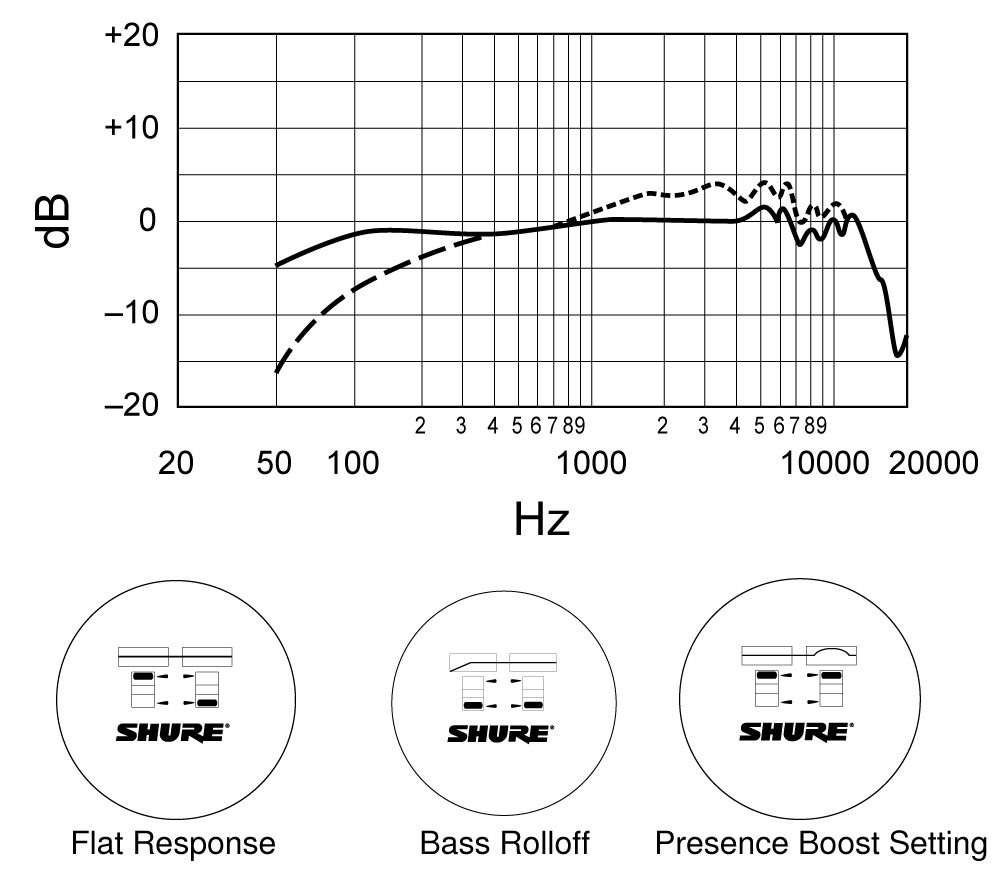
The frequency response of the Shure SM7B
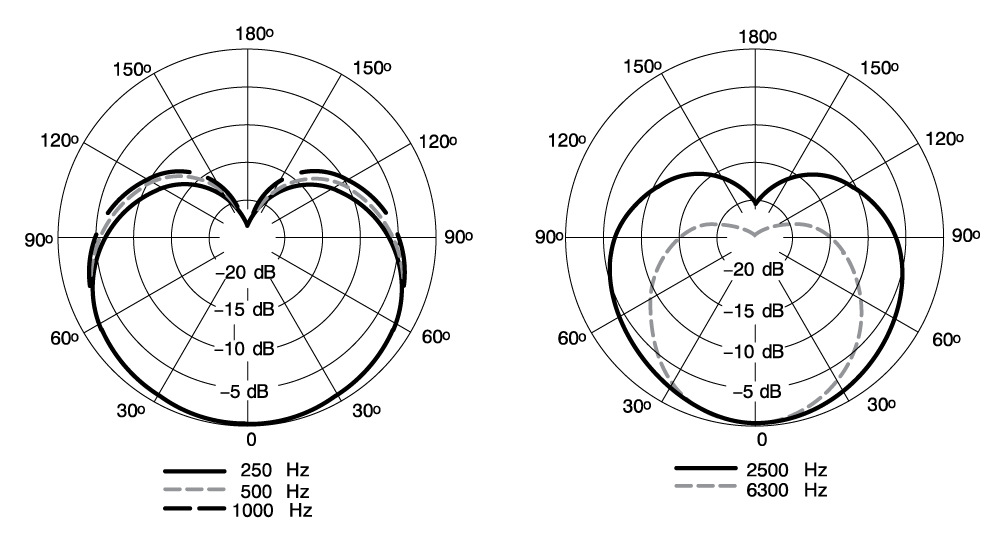
The polar pattern of the Shure SM7B
What Makes the SM7B So Great for Recording Voice?
The characteristics of the microphone that lend it to this particular recording application is that it does an exceptional job of rejecting the reflections of one’s recording environment. So if you’re in a space with less-than-ideal acoustics, the SM7B will serve you better than a more sensitive and detailed microphone — even an expensive one. If I were to set up a $10,000 Sony C800 microphone in my living room and record myself speaking, it’ll do a stellar job of capturing everything — from the particulars of my voice to the undesirable sound of my voice bouncing off of the walls and ceiling. If I set up the $399 SM7B, my voice may not come across as crystal-clear, but it’ll minimize all of those unwanted reflections. For that reason, the SM7B is great for those without access to a professionally treated space. If you’re a bedroom producer, podcaster or streamer, and you don’t have the means to perfect your recording environment, I’d say the SM7B is among the best investments you can make (if not the best).
Upon recording, additional processing such as equalization and compression (when done correctly) can help you obtain broadcast-quality audio. It may sound like overkill, but when recording my own voice I usually apply a small amount of both on the way in. Then, depending on the context in which the voice will sit, I may apply more, as well as de-essing. As you can tell, it may take a bit of extra investment of both money and effort to get the SM7B sounding like the best version of itself, but to me it’s well worth it.
What Can’t the SM7B Do?
No microphone will work perfectly on every single source and in every recording environment. There is no holy grail transducer. While I personally love the SM7B on my voice for specific applications, I could certainly see it not working for people with different vocal timbres. I don’t love the SM7B on most non-percussive acoustic instrument sources I’ve tried to use it on. This includes strings, acoustic guitar, pianos, etc.
As previously mentioned, the mic excels in minimizing room reflections and that’s great when you want a very dry, direct recording of a source. But for something like acoustic guitar that sounds more natural when enveloped with a bit of room, I’d use a different mic. Additionally, the SM7B is a dynamic microphone and is less clear and detailed than a comparably priced condenser microphone. To use acoustic guitar as a hypothetical source again, it’s likely that your resulting signal would sound a bit dull when compared to a condenser. While you can use compression, equalization and other types of processing to ‘lift the blanket’ off of a dull recording, I’d rather just track it correctly at the source.
As with everything else in music production and audio engineering, it’s all about context. I am certain in some scenarios the SM7B would fare as good, if not better, than more expensive microphones. I would feel entirely confident in suggesting that if you are investing in a versatile, reasonably priced and rugged microphone, you won’t find a more valuable piece of equipment than the Shure SM7B.
Sample Voiceover Recordings:
(No Processing)
Minimal processing

Minimal processing
More processing. In this case, both pictured signal chains were used.
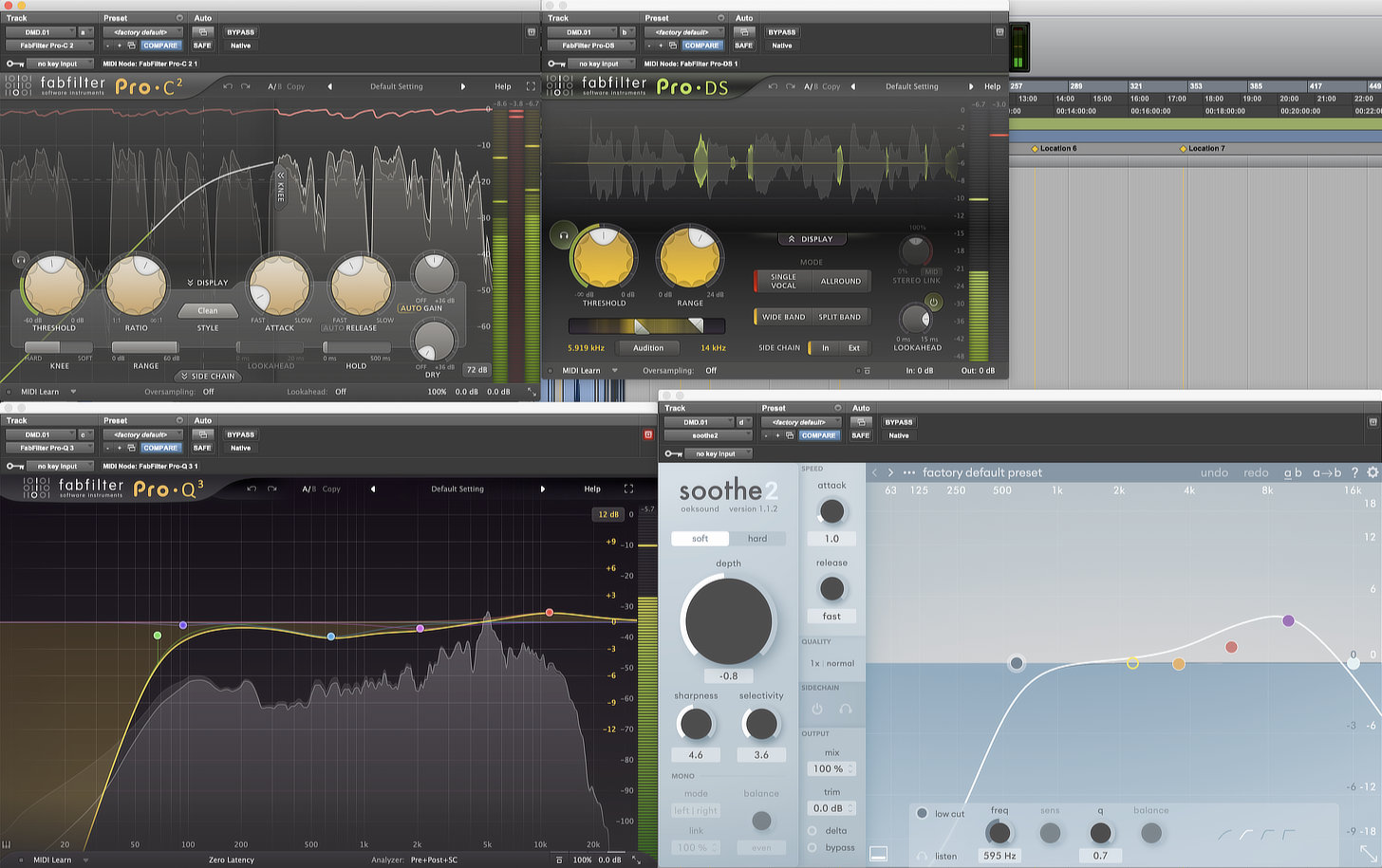
More processing. This signal chain could be used on its own or in addition to the one above.



